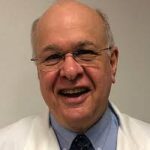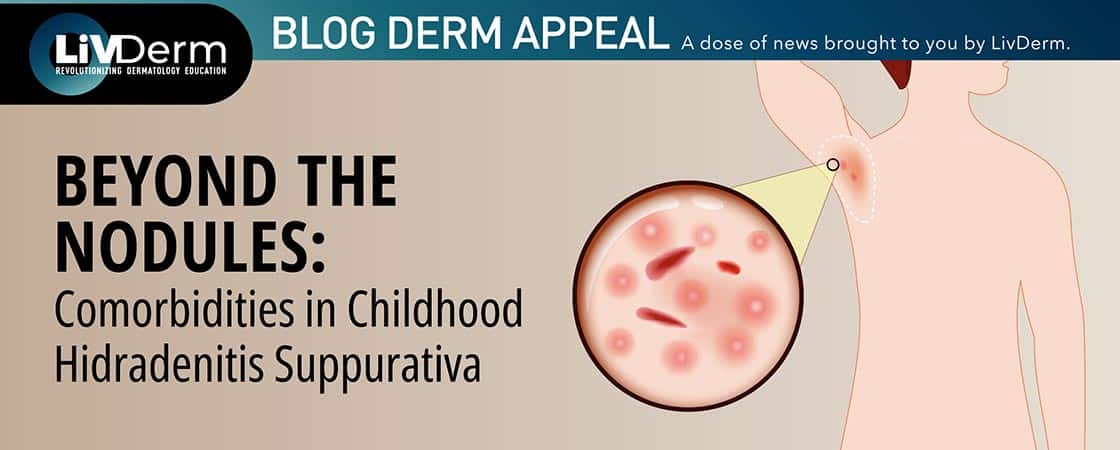



Neonatal Dermatology
The second day of the Masters of Pediatric Dermatology (MOPD) Symposium began with a look at Neonatal Dermatology. Renowned pediatric dermatologist and MOPD chair, Lawrence A. Schachner, MD began by diving into the challenges of neonatal skincare. He discussed ways to potentially strengthen the barrier function of newborn skin and encourage a healthy stratum corneum.
Then, Fernanda B. Schmidt, MD took over to speak about some of the more common infections seen in the nursery in both term and preterm babies. She discussed conditions such as impetigo, staphylococcal scalded skin syndrome, herpes simplex virus, and more, examining some of the treatment options available to these young patients.
Dr. Schachner then returned for a talk on pseudo-emergencies in the nursery, covering both infectious and non-infectious conditions and examining the possible severity of a number of these conditions. Anna L. Bruckner, MD, who had made her MOPD debut the previous day and took the stage to present a talk on true emergencies in the nursery.
She covered four main clinical presentations that require urgent dermatology evaluation. These included blisters and erosion, erythroderma, collodion membrane, and vascular mass with hematologic abnormalities. Within this session, she also spoke about the rare condition known as epidermolysis bullosa (EB), which she covered in greater detail in a later session.
Rare and Orphan Diseases
For the session on Rare and Orphan Diseases, Dr. Schmidt returned to present an overview of congenital ichthyoses, a large group of diseases with a lot of variabilities. She shared some recent updates and examined the available treatment options.
Dr. Bruckner also returned for a more in-depth discussion of EB, where she shared the four different types of EB, how to identify each, and how each can be treated. She pointed out that this complex condition requires a “lifetime of care that can be very painful and it’s psychologically traumatizing, not just for the child but for the family as well”.
After, Andrea D. Maderal, MD held a session on morphea. She spoke about the disease pathogenesis, its clinical presentations, and treatment options available, such as phototherapy, topical therapy, and systemic therapies.
Infants and Atopic Dermatitis: The Biggest Help for the Smallest Patients
The afternoon’s session kicked off with the CME Satellite Symposium on Infants and Atopic Dermatitis: The Biggest Help for the Smallest Patients, led by Dr. Schachner, Mercedes E. Gonzalez, MD, and Elaine C. Siegfried, MD. The team reviewed some of the racial disparities in atopic dermatitis (AD), how to identify the signs and symptoms of AD across skin types, and the treatment toolkit, including topical corticosteroids. Dr. Gonzalez also presented a number of case studies, highlighting the diagnosis and treatment options for each.



Cutaneous Manifestations of Systemic Diseases
Brittany G. Craiglow, MD, later led a discussion on Cutaneous Manifestations of Systemic Diseases, where she discussed several conditions such as juvenile dermatomyositis and trichotillomania, going over some of her own patient cases. Dr. Craiglow’s talk was immediately followed by a presentation on collagen vascular disease by Dr. Maderal. She spoke more in-depth about juvenile dermatomyositis, as well as cutaneous lupus and systemic sclerosis, covering their clinical features, diagnosis, and treatment landscape.
Dr. Gonzalez once again returned to the stage to look at anticipatory guidance for children’s skincare. She spoke specifically about sun protection and insect bites, going through some of the burning questions often asked by parents.
She made references to the recent headlines concerning benzene in sunscreens and how to best advise patients. Concerning insect bites, she spoke about after-bite treatment options as well as prevention measures and recommended types of repellent. Her advice was to have your recommendations ready as parents usually want a specific response in what they should be using for their children.
A session on in-depth case simulations followed, moderated by Latanya T. Benjamin, MD. Dr. Siegfried began the session with some case representations of psoriasis. She discussed the various forms of psoriasis, arising complications, and treatment options.
Peter A. Lio, MD followed with a review of AD, where he discussed the current therapies, patterns of the disease, and finding the right treatment goals. He discussed the three great hurdles as being, getting clear, keeping clear – safely, and keeping it up. He made specific references to finding what treatment options work best for the patient, as not everyone will experience the same results.
Jonette E. Keri, MD, PhD, took over with a case study on acne and the use of isotretinoin. She weighed treatment options for this particular patient and took into account the risk of inflammatory bowel disease. Dr. Gonzalez covered vascular lesions and hemangioma, reviewing several case studies of the various types seen in her practice.
The last topic in this session and for MOPD was covered by Giuseppi Micali, MD, and was about scabies and lice. During his talk, he presented attendees with a number of videos and further discussed the use of dermoscopy for accurate diagnosis and to properly distinguish between the various conditions.




Dr. Schachner returned to the stage for a final time to deliver the closing remarks, to thank attendees for their attention, and invite them back for the 32nd Annual MOPD next February.
















